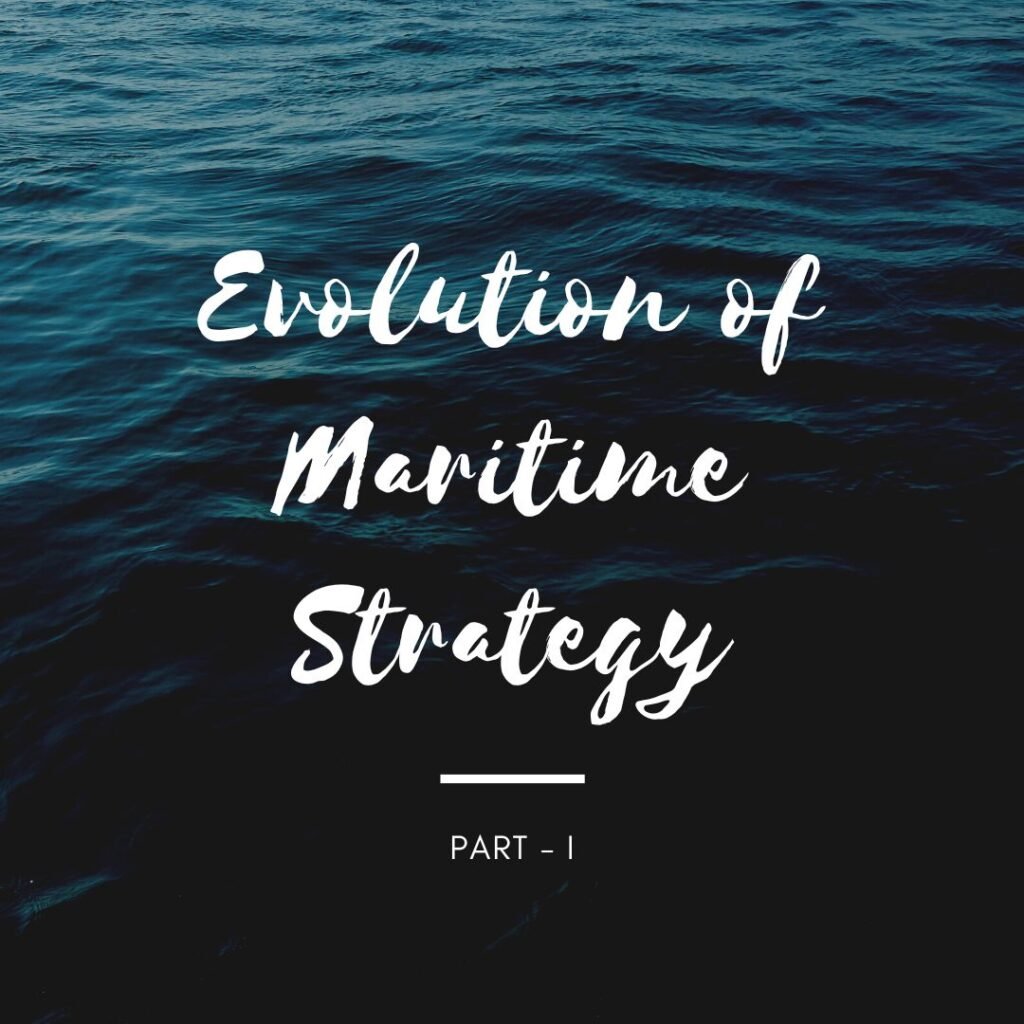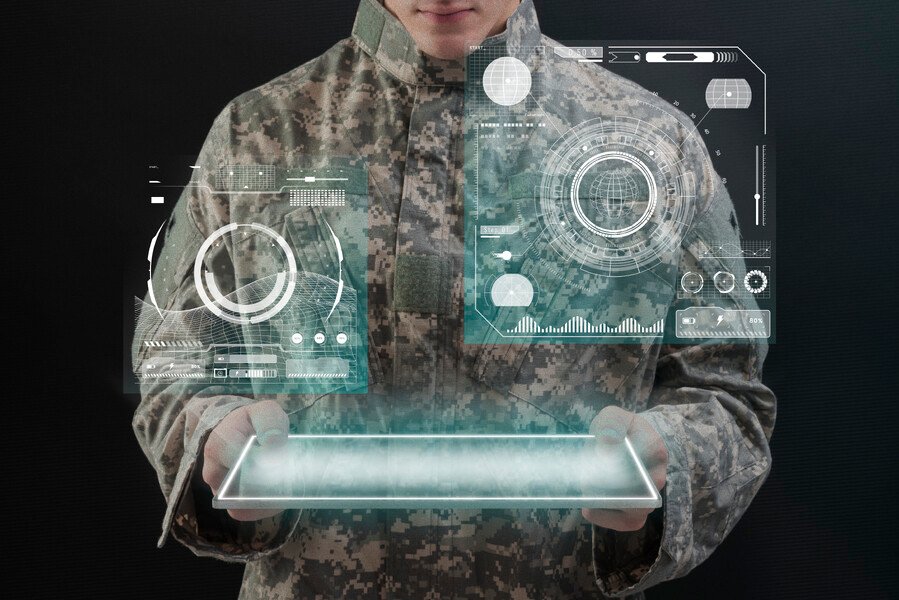AI Application in Military – Part I: A book, titled ‘The Age of AI and Our Human Future’, written by Henry Kissinger, Eric Schmidt and Daniel Huttenlocher, terms AI as a class of technology that augurs a revolution in human affairs. Arguably, human affairs are too vast and complicated for even technology to fully comprehend. At least yet. However, indicators are that AI is likely to have significant impact on humans. One area of human activity is considerably hinged on AI for futuristic dominance. It is military. This article will explore approach to AI application in Military.
AI Application in Military: What is AI?
I asked ChatGPT what is AI? Here is ChatGPT’s explanation:
Artificial Intelligence, refers to the development of computer systems and algorithms that can perform tasks typically requiring human intelligence. These tasks include problem-solving, learning from experience, understanding natural language, recognizing patterns, and making decisions. AI systems aim to replicate or simulate human cognitive functions to varying degrees. AI can be categorized into two main types:
Narrow or Weak AI (ANI): This type of AI is designed for a specific task or a narrow range of tasks. It excels at performing predefined functions and operates within a limited domain. Examples of narrow AI include virtual personal assistants like Siri, recommendation systems on streaming platforms, and image recognition software.
General or Strong AI (AGI): General AI refers to machines that possess human-like intelligence and can perform a wide range of tasks, learn from experience, and adapt to new situations. AGI remains a theoretical concept.
AI technologies have various subfields including machine learning, natural language processing, computer vision, robotics, and neural networks. These technologies enable AI systems to process and analyze vast amounts of data, make predictions, automate tasks, and interact with humans in more natural ways. Its potential for solving complex problems and improving efficiency continues to drive research and development in the field.
Ben Buchanan from Georgetown University maintains that to harness AI; ‘triad’ of data, algorithm and computing power are required. Algorithm will define what a particular AI system is designed to function. Data on the other hand is the basic requirement for AI system training and evolution as well as operational utility. While AI system is adoptive; learning and improving all the time. However, every system is dependent on algorithm and data set.
For example, AlphaZero an AI program developed by Google DeepMind, defeated Stockfish – until then the most powerful chess program. In 1000 games, AlphaZero won 195, lost 6 and drew all remaining games. A program beating another program is not a development that should be of much interest outside chess circles. Humans have been pitching against and often winning against the most powerful chess programs.
These programs relied on moves conceived, executed and uploaded by humans. The program specialty actually was to access more options much faster than the humans. However, this was not originality but a matter of computing power. By contrast AlphaZero had no preprogrammed moves, combinations or strategies derived from human play. AlphaZero was product of AI training. Trainers supplied it chess rules, instructing it to develop a strategy to maximize its proportion of wins against losses. After training for just 4 hours, AlphaZero emerged as the most powerful chess software. No human has beaten it yet.
AlphaZero is an AI program for chess. It cannot for instance become the best AI program for weather monitoring. Simply because its algorithm and data set are not designed for weather monitoring. This highlights two important aspects for warfare. First the AI systems will be highly dependent on algorithm used to develop the system. Second to be able to perform multiple warfare tasks, a system of systems just as Internet of Things (IoT) will be essential.
AI Application in Military: AI Model Architecture
AI architectures, also known as AI model architectures, are the structural designs and configurations of artificial intelligence models. These architectures define how neural networks, algorithms, and components are organized to perform specific tasks. Here are some common AI architectures:
Feedforward Neural Networks (FNN): This is the simplest form of neural network architecture, consisting of an input layer, one or more hidden layers, and an output layer. Information flows in one direction, from input to output.
For instance, FNNs are employed in military systems for the recognition and classification of targets, such as vehicles, aircraft, and ships. These systems often use FNNs to analyze sensor data, such as radar or infrared imagery, to identify and classify objects on the battlefield. For example, a military drone equipped with an onboard FNN-based target recognition system. The drone’s sensors capture images of ground targets, and the FNN processes this data in real-time to classify objects as friend or foe, helping military personnel make informed decisions during missions.
Similarly, FNNs are used in military cybersecurity systems to detect and mitigate cyber threats and intrusions. These systems analyze network traffic patterns, detect anomalies, and identify potential security breaches. The FNN continuously analyzes data packets, looking for unusual patterns or behaviors that may indicate a cyberattack. If it detects suspicious activity, it can trigger automated responses to protect sensitive military information.
Convolutional Neural Networks (CNN): CNNs are designed for tasks involving grid-structured data, such as images and video. They use convolutional layers to automatically learn spatial hierarchies of features.
For instance, CNNs are integrated into the visual processing systems of military UAVs to enhance their surveillance capabilities. These drones are equipped with cameras and sensors to capture images and videos of the battlefield. The CNN analyzes real-time aerial imagery to identify and track potential threats, such as enemy vehicles or personnel movements. This information is then relayed to military personnel for strategic decision-making.
Similarly, Automated Target Recognition (ATR) Systems use CNNs to identify and classify various types of objects, including tanks, aircraft, and ships, from sensor data like radar and infrared imagery. These systems aid in target selection and threat assessment. For example, a naval vessel’s ATR system that employs CNNs to analyze radar and sonar data. The CNN identifies incoming vessels, categorizes them as friendly or hostile, and provides the vessel’s crew with actionable intelligence to make informed decisions regarding engagement or evasion.
Recurrent Neural Networks (RNN): RNNs are suitable for sequence data, like time series or natural language. They have loops in their architecture to maintain internal state, allowing them to process sequences of varying lengths.
For instance, RNNs are employed in military communication systems to enhance signal processing and improve communication reliability in challenging environments. For example, a military radio communication system that uses RNNs to predict and mitigate signal interference and fading caused by factors like terrain and atmospheric conditions. The RNN can adapt the transmission parameters in real-time to maintain effective communication between units.
Similarly, RNNs are used for Predictive Maintenance of systems. RNN predict equipment failures and maintenance needs for military vehicles, aircraft, and other assets. By analyzing historical sensor data, RNNs can forecast when maintenance is required, reducing downtime and improving operational readiness.
Similarly, an RNN-based predictive maintenance system for helicopters. The RNN processes sensor data, such as engine temperature, rotor vibrations, and flight parameters, to predict when specific components or systems may require maintenance. This allows maintenance crews to schedule Proactive Maintenance, ensuring the helicopter’s availability for missions.
Long Short-Term Memory (LSTM): LSTMs are a type of RNN that addresses the vanishing gradient problem, making them better suited for tasks requiring memory over long sequences.
For instance, LSTMs are employed in naval systems for the detection of anomalies in maritime traffic and activities. These systems analyze data from radar, sonar, and other sensors to identify unusual vessel behaviors or potential threats, such as illegal fishing or suspicious ship movements. For example, a naval surveillance system that utilizes LSTM-based anomaly detection to monitor ship traffic in a specific maritime region. The LSTM model learns the normal patterns of vessel behavior and can trigger alerts when it detects deviations, helping naval authorities respond to potential security threats or safety concerns.
Similarly, LSTMs are used to monitor the health and performance of naval vessels’ critical systems and equipment, such as engines, navigation systems, and communication systems. By analyzing historical sensor data, LSTMs can predict equipment failures and recommend maintenance actions.
Gated Recurrent Unit (GRU): Similar to LSTMs, GRUs are designed to handle long sequences and mitigate the vanishing gradient issue. They have a simpler architecture.
For instance, GRUs are employed in naval systems for the tracking of underwater targets, such as submarines or torpedoes. These systems use sonar data and historical information to predict the future positions of underwater objects and ensure the safety of naval vessels. The GRU model predicts the likely trajectory of an incoming torpedo based on its initial observations and historical data, allowing the naval vessel to take evasive actions or deploy countermeasures to avoid the threat.
Similarly, GRUs can be used in naval systems for weather and ocean condition forecasting. Accurate predictions of weather patterns, sea states, and currents are essential for naval operations, including ship routing, mission planning, and aircraft takeoff and landing. A naval weather forecasting system that employs GRUs to model and predict weather and ocean conditions in a specific maritime region. The GRU-based model takes into account historical weather data, satellite imagery, and oceanographic information to provide accurate short-term and long-term forecasts, ensuring safe and effective naval operations.
Transformers: Transformers are a breakthrough in natural language processing. They use self-attention mechanisms to process sequences in parallel, making them highly efficient and effective for tasks like machine translation and text generation.
For instance, Transformers can be integrated into naval communication systems to enhance signal processing and improve communication efficiency, especially in situations with high interference or complex signal environments. The Transformer model analyzes real-time signal data, adapts modulation schemes, and selects the most suitable communication channels based on the current environmental conditions, ensuring reliable and secure communication between naval units.
Transformers are employed in naval surveillance systems for the detection and analysis of maritime activities and potential threats. These systems process data from radar, sonar, and other sensors to provide real-time situational awareness. The Transformer model can detect and classify vessels, submarines, and underwater objects while considering factors such as vessel size, speed, and behavior. It provides naval operators with a comprehensive view of the maritime environment, helping identify potential security threats.
Autoencoders: Autoencoders are neural networks used for unsupervised learning and dimensionality reduction. They consist of an encoder that compresses data and a decoder that reconstructs it.
Naval systems often rely on various sensors, including sonar and underwater cameras, to collect large amounts of data in underwater environments. Autoencoders can be used to compress this data efficiently, reducing bandwidth requirements and storage needs. The autoencoder model reduces the dimensionality of the sensor data while retaining critical information. This compressed data is then transmitted to naval vessels or monitoring stations, saving bandwidth and storage space.
Autoencoders can be employed in naval systems for the detection of anomalies in critical equipment and machinery. By training on normal operation data, autoencoders can identify deviations from expected behavior, indicating potential equipment failures or maintenance needs. For example, an autoencoder-based anomaly detection system for naval ship engines. The autoencoder is trained on sensor data from well-functioning engines. During operation, the autoencoder continuously compares incoming sensor data to its learned representation. If it detects a significant deviation, it triggers an alert, allowing naval personnel to address potential issues proactively.
Generative Adversarial Networks (GANs): GANs consist of a generator and a discriminator, which are trained in opposition. They are used for generating realistic data, such as images, and have applications in art generation, image-to-image translation, and more.
For instance, GANs can be used to create realistic virtual training environments for naval personnel. These simulations can replicate complex scenarios, such as naval battles or ship operations, and provide a safe and cost-effective way for training. For example, a naval training simulator that employs GANs to generate realistic ocean and weather conditions, as well as detailed ship and aircraft models. This enables trainees to practice navigation, combat, and emergency response in a highly immersive and dynamic virtual environment.
Similarly, GANs can enhance the quality of images and videos captured by naval surveillance systems. By improving image clarity and resolution, GANs can aid in identifying and tracking objects of interest, such as vessels or underwater targets. For example, a naval surveillance system that utilizes GANs for image super-resolution. When low-resolution images from radar or sonar are available, the GAN can generate high-resolution versions of these images, allowing naval operators to obtain clearer visuals of potential threats or targets.
Siamese Networks: Siamese networks are used for similarity learning. They consist of two identical subnetworks, and their purpose is to measure the similarity between two inputs.
For instance, Siamese networks can be used in naval systems for target recognition and classification tasks, such as identifying enemy vessels, submarines, or aircraft. These networks are trained to measure the similarity between input data and known target profiles. For example, a naval target recognition system that employs Siamese networks to compare sensor data (e.g., radar or sonar signals) from detected objects to a database of known naval vessels and aircraft. The Siamese network calculates similarity scores, helping naval operators classify and identify potential threats accurately.
Capsule Networks (CapsNets): CapsNets are designed to improve the shortcomings of traditional CNNs in computer vision tasks by preserving hierarchical information about the objects in an image.
CapsNets can be employed in naval systems for the recognition of underwater objects, such as mines, submarines, or marine life. CapsNets’ ability to capture hierarchical features could be valuable in complex underwater environments. For example, an underwater autonomous vehicle (AUV) equipped with a CapsNet-based system for object recognition. The CapsNet processes images and sonar data to identify and classify underwater objects, helping the naval system navigate safely and detect potential threats.
Attention Mechanisms: Attention mechanisms, as seen in Transformers, have become a fundamental architectural component in many AI models. They allow models to focus on specific parts of the input when making predictions.
For instance, Attention Mechanisms can be applied to optimize the allocation of naval resources, such as ships, aircraft, and personnel, in dynamic operational environments. They can help commanders make informed decisions by considering factors like mission objectives, threat levels, and resource availability. For instance, a naval command and control system that utilizes attention mechanisms to allocate naval assets for a specific mission. The attention mechanism considers real-time data from multiple sources, including intelligence reports, sensor data, and mission objectives. It recommends the allocation of ships, aircraft, and other resources to achieve mission success while minimizing risks.
Memory Networks: Memory networks incorporate external memory for reasoning over longer contexts. They are used in question-answering tasks and language understanding.
For instance, memory networks can be used to create a naval knowledge base that stores a vast amount of information, including historical mission data, intelligence reports, and maritime regulations. The memory network can efficiently retrieve relevant information in response to queries from naval personnel. Memory networks can assist in analyzing historical data related to naval missions and operations. By storing and processing past mission details, they can help naval planners make informed decisions and anticipate challenges. For example, a mission planning system for naval operations that incorporates a memory network. The memory network stores data from previous missions, including environmental conditions, enemy encounters, and mission outcomes. When planning a new mission, the memory network can provide insights based on historical data, helping commanders develop effective strategies and risk assessments.
Neuromorphic Architectures: These architectures are inspired by the human brain’s structure and aim to create AI models that mimic brain functions more closely.
For instance, Neuromorphic hardware can be integrated into AUVs used for environmental sensing. These systems will mimic the brain’s ability to process sensory data efficiently, enabling AUVs to navigate complex underwater environments and collect data on ocean conditions. The neuromorphic hardware processes sensory inputs in real time, allowing the AUV to adapt its navigation and data collection strategies based on changing conditions, such as detecting underwater currents or anomalies in water temperature.
Similarly, Neuromorphic architectures can be applied to radar systems for target detection and tracking. These systems could mimic human perception by efficiently processing radar signals, identifying potential targets, and prioritizing tracking based on contextual information. The system can quickly identify and prioritize potential targets based on their behavior, size, and threat level, enhancing situational awareness and target tracking accuracy.
Hybrid Architectures: Many AI systems combine multiple architectures and techniques to leverage the strengths of each for various tasks. For example, combining CNNs with RNNs for image captioning.
For instance, Hybrid architectures can combine Recurrent Neural Networks (RNNs) for time-series analysis and Reinforcement Learning (RL) for decision-making. In naval maintenance operations, this hybrid system can predict equipment failures and recommend maintenance actions while considering resource constraints. For example, a predictive maintenance and resource allocation system for naval ships. The system uses RNNs to analyze sensor data from onboard equipment and predict when maintenance is required for critical systems. It also integrates RL algorithms to optimize the allocation of maintenance personnel, spare parts, and available dockyard facilities. This ensures that maintenance efforts are prioritized based on mission-critical needs and resource availability.
Meta-Learning Architectures: Meta-learning models are designed to learn how to learn. They are capable of adapting to new tasks with minimal data.
For instance, Meta-learning can be applied to AUVs used for various naval tasks, including reconnaissance and environmental monitoring. A meta-learning architecture allows these AUVs to adapt their behavior and navigation strategies based on prior experiences and environmental conditions. The meta-learning architecture enables the AUV to learn from past deployments and optimize its sensor configurations, navigation paths, and data collection strategies for specific tasks. This adaptability enhances the AUV’s effectiveness in dynamic and challenging maritime scenarios.
Probabilistic Graphical Models: These models use graphs to represent relationships between variables and are used for probabilistic reasoning and inference.
For instance, Bayesian networks, a type of PGM, can be employed in naval systems for threat assessment and decision-making. These models can capture complex relationships between various factors, such as sensor data, environmental conditions, and potential threats. The Bayesian network considers factors like radar data, sonar data, weather conditions, and historical threat patterns. It calculates the probability of encountering specific threats, such as enemy vessels or underwater mines, in different operational scenarios. This information assists naval commanders in determining the appropriate response and deployment strategies.
Similarly, Hidden Markov Models, another type of PGM, can be used in naval systems for tracking and predicting the movements of submarines or other underwater objects. HMMs can model the hidden states and observations associated with these objects. The HMM models the underwater movements of submarines based on acoustic sensor data and historical submarine behavior. By estimating the hidden states (submarine positions and velocities), the system can predict the likely future locations of submarines. Thus enhancing situational awareness and aiding in anti-submarine warfare operations.
The choice of architecture depends on the specific task and dataset, and often, researchers and engineers’ experiment with different architectures to find the one that performs best for a given problem. AI architecture development is an active area of research, and new architectures are continuously being proposed and developed to address various challenges in artificial intelligence.
As evident, many functions in military can be performed, augmented and optimized through AI. However, the complexity and utility of the systems will define the approach for AI. For instance, AI system designed for vessel traffic monitoring will be dependent upon manned and unmanned systems and may involve ML, computer vision, evolutionary algorithm, expert system and autonomous system. It may also involve integration of multiple AI models to generate a single comprehensive system.
So what is a suitable approach to AI application in Military? How to go about it? Answers will be in AI Application in Military Part-II.
To be continued
About the author.







One Response
Very informative article indeed.